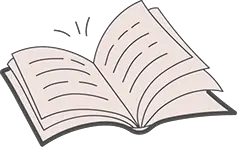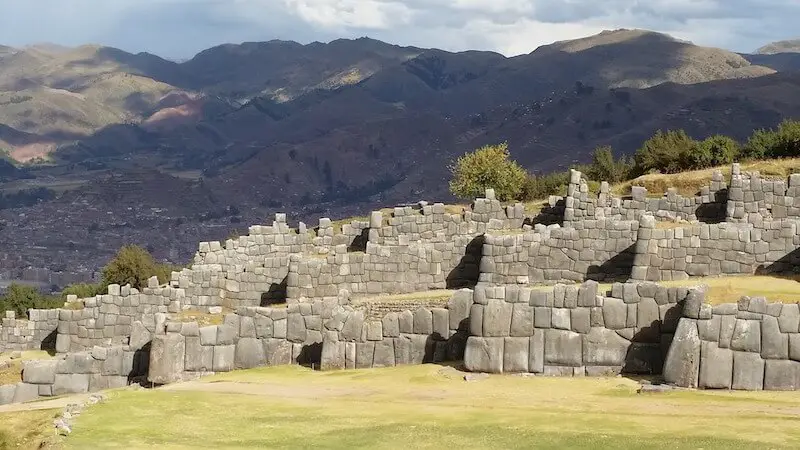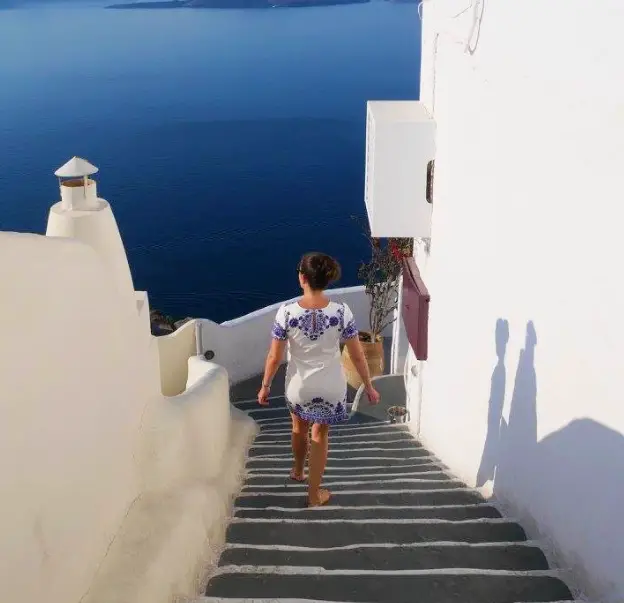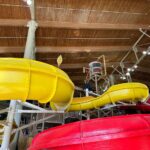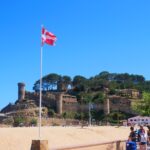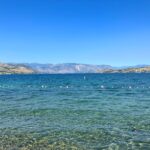Visiting the Inca Ruins of Sacsayhuaman in Peru (Full Guide!)
Last Updated on April 8, 2024 by Kelly
If you’re planning a trip to visit Machu Picchu, you’ll undoubtedly spend time in the city of Cusco. Cusco was once the capital of the Inca empire, and it contains some of the most notable Inca ruins in Peru. Located high on a hill overlooking Cusco, Sacsayhuaman is one of the most famous Inca archaeological sites in the area. Sacsayhuaman is an Inca complex that was built during the 15th century. Much like Machu Picchu, it contains a citadel and religious sites. It also served as a military fortress.
We spent a full day exploring Sacsayhuaman, and we’re excited to share our photos and tips. In this post, we’ll share a complete guide for visiting Sacsayhuaman in Cusco, Peru.
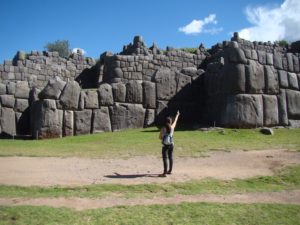
How to Get to There
It’s very easy to reach Sacsayhuaman while in Cusco. The ruins are located to the north on the outskirts of town.
There are two primary options for reaching the ruins from downtown Cusco. You can walk to the ruins, or you can take a taxi.
When we visited Sacsayhuaman, we chose to walk to the ruins. The walk was a bit uphill, but it was manageable even though we were still adjusting to the altitude. We thought it was a great warm-up for our upcoming hike on the Inca Trail!
Walking Route to Sacsayhuaman
From the northeast corner of the Plaza de Armas, walk north until you reach Suecia street. Take a right on Waynapata, and then an almost immediate left on Resbalosa. Then, take a right on Don Bosco. Continue up the hill and you will see the entrance to Sacsayhuaman. The walk is about half a mile long (750 meters) and should take about 30 minutes. (Maybe a little longer if you stop to rest as you make your way up the hill.)
We recommend taking this route because the Mirador de Plaza San Cristobal is along the way. You’ll also get to see the San Cristobal church which is quite beautiful. You can stop at this lookout for a beautiful view of the city and the Plaza de Armas!
Once you make your way through the entrance, you’ll do more walking as you explore the ruins.
Taking a Taxi to Sacsayhuaman
You can easily arrange a taxi to take you to Sacsayhuaman. You can ask your hotel’s front desk staff to call a taxi for you, or you can find one near the Plaza de Armas. You can always walk back to town after your visit (way easier going downhill!), or you can hire a taxi from the site’s exit.
| Planning a trip to Peru? See our guide to planning the best Peru itinerary! |
About Sacsayhuaman
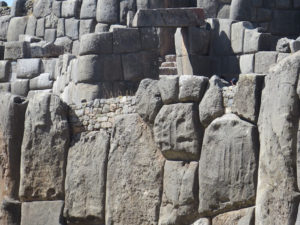
Sacsayhuaman has been a UNESCO World Heritage Site since 1983. You’ll find many spellings of the site around town and online. Other spellings of the ruins include Saksaywaman, Saqsawaman, and Saqsayhuman. The name on the entrance is spelled Saqsaywaman, but over the years, Sacsayhuaman is the most common spelling. (So don’t get confused if you see multiple spellings while you’re visiting… they all refer to the same place!)
The name Sacsayhuaman roughly translates to “Satisfied Falcon” in the Quechua language. Similar reported translations are “Royal Eagle” and “Place Where the Hawk is Satiated.”
Sacsayhuaman was built in the 15th century under emperor Pachacuti.
Although Machu Picchu is the most famous Inca archaeological site, Sacsayhuaman is technically the largest structure built by the Inca. (It deserves more credit!)
Some of the archeological work at Sacsayhuaman has found structures from the Killke people, which pre-date the Inca. It’s unclear what the Killke used the site for, but it’s clearly held significance to the indigenous people for hundreds of years. Evidence shows that the indigenous people inhabited the area since 900 AD.
The Inca constructed the city of Cusco to resemble the shape of puma from an aerial view. If that’s the case, then Sacsayhuaman represented the head of the puma.
What to See
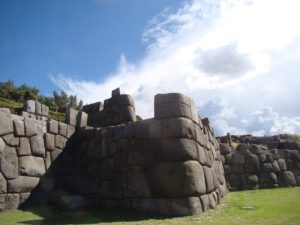
The ruins of Sacsayhuaman consist of several structures. The site is huge, covering more than 3,000 hectares.
Sacsayhuaman is divided into three primary areas: the walled fortress, the parade ground, and the Rodadero (site of religious ceremonies).
The most striking aspect of Sacsayhuaman are the walls that surround the complex. The walls were built from giant boulders that were carefully shaped to interlock with each other. (More about the construction of Sacsayhuaman later!)
The walls consist of 3 tiers that were built in a zigzag pattern. It’s believed that these walls represent the teeth of the puma.
One of the main highlights is a large plaza that was used for ceremonies. To this day, the festival of Inti Raymi is celebrated at Sacsayhuaman.
Sacsayhuaman also contains lots of temples, the most famous of which is dedicated to the Sun God Inti.
There are also remnants of three towers: Muyuccmarca, Paucarmarca, and Sallaqmarca. Unfortunately, the towers are no longer standing after the Spanish removed many of the stones to construct their own buildings. However, you can see the foundations for the towers.
Sacsayhuaman also contains a series of aqueducts, which ensured fresh water to its inhabitants.
How it Was Built
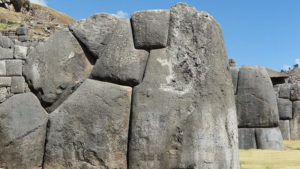
Construction for Sacsayhuaman began under emperor Pachacuti in the 15th century. It took 20,000 people between 60 to 90 years to finish it.
The construction of Sacsayhuaman is an engineering marvel considering that the Inca people did not use the wheel to transport the large boulders. Some of the largest boulders at Sacsayhuaman weigh anywhere between 100 and 200 tonnes.
The Inca didn’t have the use of iron or steel to cut the stones. The stones were cut precisely so that they could fit together without the use of mortar. The stones were also positioned to interlock with each other so that they could withstand earthquakes. Even 500 years later, the walls still stand.
Visiting Information
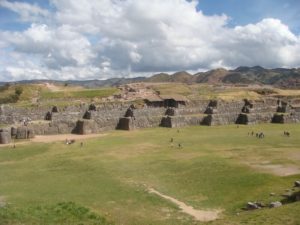
You’ll need to purchase tickets to enter Sacsayhuaman. The entrance to Sacsayhuaman is included in the Boleto Turistico (General Tourist Ticket). If you purchase the tourist ticket, you’ll be able to see multiple sites during the course of 10 days.
At the time of this writing, it costs 130 soles to purchase the full tourist ticket to enter Sacsayhuaman. The hours of operation are from 7am to 5:30pm. Be sure to check operating hours prior to planning your own visit.
| Sacsayhuaman is just one of 23 things we recommend seeing while in Cusco, Peru! |
Disclosure: This post may contain affiliate links. As an Amazon Associate, I may earn commissions from qualifying purchases.
Tips for Visiting
- Be mindful of the altitude: If you just recently arrived in Cusco, it’ll take time for your body to adjust to the altitude. We definitely took our time exploring the ruins and stopped often to rest.
- Bring water: Keep yourself hydrated as you explore. The ruins of Sacsayhuaman are unshaded and it can get pretty hot in direct sunlight.
- Make sure your phone is fully charged and download offline maps: You’ll want to use your phone for navigation and photos. It helps to download offline maps ahead of time so that you can use your phone for navigation even if you don’t have cell service or WiFi.
- Bring soles with you: Make sure that you bring small change in the local currency (soles). If you want to purchase snacks or souvenirs along the way, many businesses only accept soles.
- Save time for Cristo Blanco: The Cristo Blanco statue isn’t far from Sacsayhuaman. It’s only about a 10-15 minute walk. Save a little time at the end of your visit to see the statue up close, as well as the view of Cusco!
Tours of Sacsayhuaman
There are several tour options that you can book ahead of time to really get the most out of your experience to Sacsayhuaman. We didn’t book a tour, and we really regretted it! We don’t often book tours, but this is one place where it would have been really helpful to have a guide. Whereas we just wandered around the ruins admiring the stones, a guide would be able to tell you the details about each part of the fortress, as well as its cultural and historical significance.
- Full-Day Tour of Cusco, Puka Pukara, Tambomachay, and Sacsayhuaman: This full-day tour will take you to the aforementioned sites, as well as the San Pedro Market, Coricancha Temple, and the Plaza de Armas.
Our Experience at Sacsayhuaman
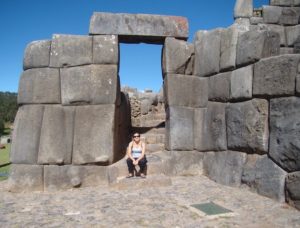
We visited Sacsayhuaman during one of our first days in Cusco. We had bought the Boleto Turistico (General Tourist Ticket) and wanted to see some of the local sights. We had 2 days in Cusco before we were set to hike the Inca Trail to see Machu Picchu, and then another day in Cusco after we got back from Machu Picchu. Of our 3 total days in Cusco, we spent spent one day exploring the city, one day exploring the ruins of Pisac in the Sacred Valley, and then another day seeing Moray and the Salineras de Maras.
We decided to visit Sacsayhuaman after checking out the Plaza de Armas. We saw that it wasn’t too long of a walk, so we opted to walk up the hill instead of taking a taxi. The walk was a lot harder than we gave it credit for due to the altitude. We had to stop to catch our breath a few times. But, we really liked seeing the shops and residences along the streets, and we also liked stopping at the Mirador de Plaza San Cristobal (viewpoint in front of the San Cristobal church).
As we walked up the hill, we caught our first glimpse of the fortress walls of Sacsayhuaman. The rocks were absolutely massive! As we got to explore the inside of the park, we just couldn’t fathom that people moved those heavy stones from quarries, shaped them to perfection, and then lifted them on top of each other. It was truly outstanding.
We enjoyed roaming around the complex and taking lots of pictures. In hindsight, it would have been nice to have had a guide to explain the significance of everything we saw. We’d recommend to others that you book a private tour so you can still roam at your own pace, but you’d have someone there to explain everything to you. (And it’s always nice to have someone to take photos of you too!)
Looking for a hotel in Cusco? We stayed at the Apu Huascaran Hostal and would recommend it to others! For a list of over one thousand accommodations in Cusco, click here.
Nearby Activities
Cristo Blanco
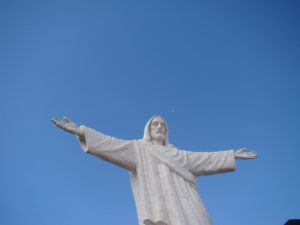
The Cristo Blanco statue (translated to “White Christ” statue) is located just a short walk away from Sacsayhuaman. The statue resembles Brazil’s Christ the Redeemer statue, but on a much smaller scale. The statue is 26 feet high and was a gift from Palestinians that sought refuge in Cusco after World War II. The statue is on Pukamoqo Hill, which was a site of spiritual importance to the Inca. It’s said that soil from all 4 quarters of the empire are located on the hill. (We wrote all about our hike to Cristo Blanco.)
Plaza de Armas

Plaza de Armas is located in the heart of Cusco. This plaza was built by the Spanish to replace the Inca’s Great Inca Square, which was twice the size of the current plaza. In the center of the square is a statue of Tupac Amaru II, who led an uprising against the Spanish and was later executed for his efforts. There are two churches in the square: Cathedral Basilica of the Assumption of the Virgin (known as the Cusco Cathedral) and the Church La Compañía de Jesús.
Hatun Rumiyoc Street
This narrow cobblestone street was one of the Inca’s original roads. The road is a pedestrian street and cars are not permitted on it. As you walk down the street, you’ll see large stones that were once part of the Palacio Inka Roca. The street is especially famous because it houses the 12-Angled Stone, which was a heavy stone that the Inca carved with 12 different angles to perfectly fit the wall.
Qoricancha Temple
Qoricancha, also spelled as Coricancha, is the Inca’s Temple of the Sun and was dedicated to Inti, the Sun God. It was constructed in about the year 1200 and was the most important religious site in Cusco. The name Qoricancha means “Walls of Gold.” The temple walls were lined with gold, and many gold statues and artifacts filled the temple.
San Pedro Market
The San Pedro Market is less than a 10-minute walk from the Plaza de Armas. At the market, you’ll likely see Peruvians dressed in traditional clothing. There are tons of vendors at the market, selling everything from produce to souvenirs. There’s lots of fresh-made juices at the market, so be sure to try several different flavors.
Summary
If you’re visiting Cusco, you’ll definitely want to make time to see the Inca ruins at Sacsayhuaman. We thought that the site was absolutely huge, and there’s so much to see. The ruins are very easy to access from Cusco. If you’re interested in seeing Inca ruins, then you have to add Sacsayhuaman to your itinerary.
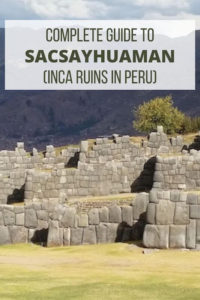
Disclaimer: We always strive for content accuracy. Since the time of publishing, travel-related information regarding pricing, schedules, and hours may have changed. Please look up such information directly from each vendor or institution for the most current information.
